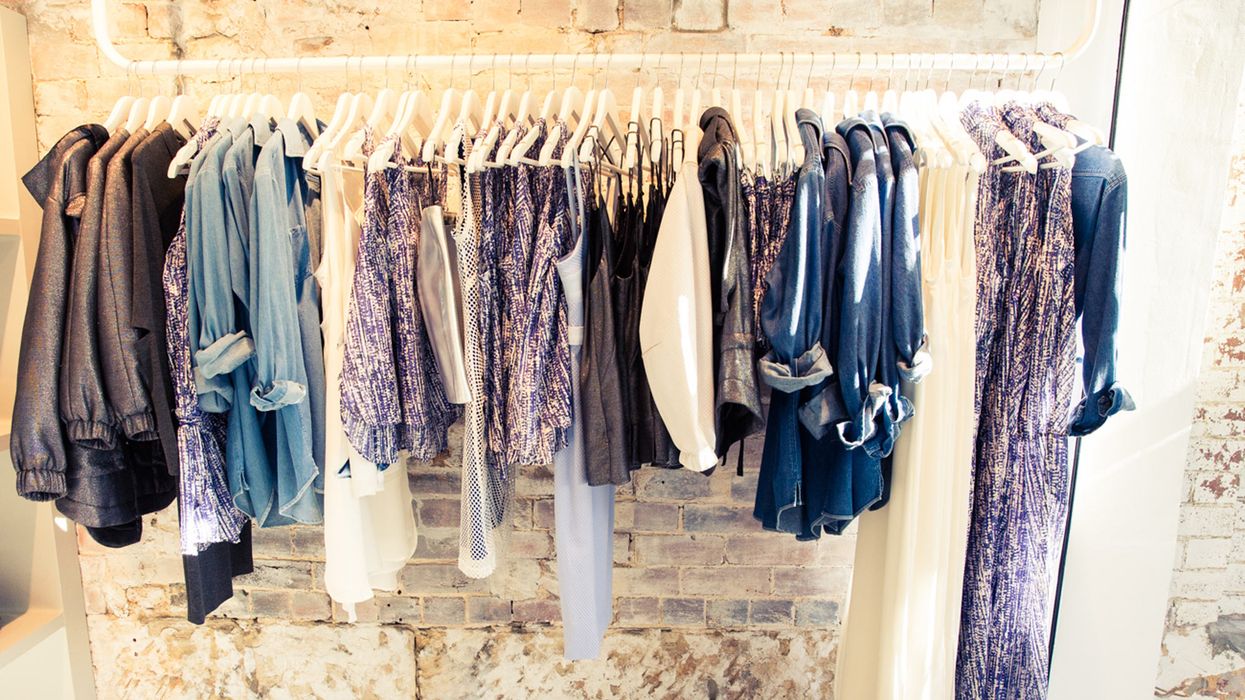Exactly how to Style Your Clothing with Boutique Fashion Discovers
Exactly how to Style Your Clothing with Boutique Fashion Discovers
Blog Article
Lasting Fashion: Exactly How Eco-Friendly Garments Is Shaping the Future of Design
As the fashion industry deals with raising examination over its environmental effect, the surge of lasting fashion uses an appealing choice that lines up design with environmental obligation. Utilizing cutting-edge products such as recycled fibers and plant-based fabrics, together with sophisticated techniques like electronic and 3D printing, developers are redefining what it implies to be trendy in the contemporary age. Simultaneously, the growing appeal of upcycling and thrift society is fostering a change in the direction of a circular economy. Just how does this activity absolutely affect the future trajectory of style, and what difficulties lie ahead in its widespread fostering?
Ingenious Sustainable Products
As the fashion business faces its ecological influence, innovative sustainable products have arised as a critical remedy for lowering eco-friendly impacts. Among one of the most promising materials are those obtained from all-natural, sustainable sources, such as natural cotton, hemp, and bamboo. These materials not only reduce reliance on fossil fuels yet also decrease unsafe pesticide use and water consumption. Organic cotton, for instance, uses dramatically less water than standard cotton and eliminates the need for toxic chemicals, consequently preserving dirt health and biodiversity.
Along with plant-based materials, innovations in biofabrication have caused the advancement of lab-grown textiles. Mycelium leather, stemmed from mushroom roots, provides a flexible and naturally degradable option to pet leather. Its production causes substantially reduced carbon exhausts and water use, making it a more sustainable choice for stylist seeking to line up with environmentally friendly methods.
Recycled materials are also acquiring traction, with polyester made from recycled plastic bottles representing a considerable development. This advancement not just draws away plastic waste from land fills and seas yet likewise minimizes energy consumption contrasted to creating virgin polyester. With each other, these products highlight the capacity for an extra sustainable fashion sector, leading the way for eco aware style and production.
Eco-Conscious Manufacturing
Building on the technologies in sustainable products, the style market is additionally re-evaluating its manufacturing processes to better minimize ecological impact. Secret strategies include decreasing water consumption, reducing carbon discharges, and getting rid of hazardous chemicals.
One more critical facet is the decrease of harmful chemicals generally made use of in dyeing and ending up fabrics. Eco-conscious producers are changing in the direction of plant-based dyes and waterless dyeing modern technologies, which not just safeguard local communities however additionally improve worker security. Innovations like digital printing decrease material waste and power usage, supplying a cleaner option to traditional techniques.
With the development of blockchain innovation, business can now supply comprehensive insights right into their supply chains, making sure honest and eco pleasant practices at each action. As the need for eco-conscious products expands, suppliers are obliged to innovate, making sure that the future of fashion is both stylish and lasting.
The Increase of Upcycling
Upcycling, a transformative practice in lasting fashion, involves creatively repurposing thrown out products into new, top quality products. This cutting-edge technique not only minimizes waste but likewise lessens the need for resources, therefore minimizing the environmental impact of garments production. By reconstructing and reimagining existing products, designers and fashion brand names are able to instill originality into their collections while advertising environmental obligation.

Furthermore, the upcycling movement has actually encouraged independent developers and little businesses, who commonly lead in advancement because of their agility and imagination. By maximizing the plentiful availability of extra products, these entities contribute to a circular economic climate, demonstrating that style can be both stylish and sustainable. Via upcycling, the sector takes considerable strides towards an extra conscious and liable future.
Thrift Society's Effect
The blossoming thrift culture substantially reshapes the landscape of lasting fashion, highlighting the significance of mindful intake. This cultural change encourages customers to embrace used clothing, consequently decreasing the need for new garment manufacturing and minimizing environmental impact. Second hand buying not only prolongs the lifecycle of garments yet likewise decreases the carbon impact connected with manufacturing, transporting, and taking care of apparel.
A key aspect of thrift society is its democratization of style. By offering a broad range of designs from different periods at affordable prices, second hand stores make style obtainable to a more comprehensive audience. This access cultivates a sense of uniqueness and creative thinking, as customers mix and suit unique pieces to curate tailored closets without adding to the quick style cycle.
In addition, thrift culture advertises circularity in style, straightening with the concepts of a round economic climate. By recirculating garments, the cycle of waste is interfered with, and sources are preserved. This practice supports a change from a straight "take-make-dispose" version to a much more sustainable structure. As more developers and consumers accept second hand culture, the garment industry is compelled to adjust, integrating lasting methods to satisfy the growing need for eco-conscious choices.

Future Trends in vogue
Style's evolution is significantly shaped by sustainability-driven efforts and technical advancements. see page One prominent pattern is the rise of digital style, where virtual garments can be used in enhanced reality settings, significantly minimizing textile waste.
Moreover, the assimilation of blockchain innovation supplies brand-new opportunities in transparency and traceability, enabling customers to confirm the sustainability credentials of their apparel. boutique fashion. This ensures liability in supply chains and advertises moral sourcing practices. 3D printing is yet one more innovation that promises to transform producing processes by allowing on-demand production, thus minimizing excess supply and waste
In addition, the growth of bio-fabricated products, such as lab-grown natural leather and plant-based fabrics, offers lasting choices to typical products. These innovations decrease dependence on pet items and resource-intensive crops. As these innovations mature, they are poised to transform the fashion landscape, combining style with sustainability. The future of style, consequently, hinges on a seamless blend of technology, advancement, and environmental obligation.
Final Thought
The makeover of the fashion sector through lasting practices suggests a crucial shift towards environmental liability. This evolution not just aligns fashion with environmental sustainability yet also establishes a criterion for future trends concentrated on duty and technology.
As the fashion industry faces raising examination over its ecological influence, the rise of sustainable style uses a promising option that straightens design with ecological obligation.As the style sector grapples with its environmental influence, innovative sustainable materials have arised as an essential service for minimizing eco-friendly impacts. Together, these products underscore the potential for a more sustainable fashion industry, paving the method for eco aware layout and manufacturing.
Structure on the innovations in sustainable products, the fashion market is also re-evaluating its production processes to further reduce environmental impact. boutique fashion.Upcycling, a transformative practice in lasting style, involves artistically repurposing discarded materials into new, high-quality items
Report this page